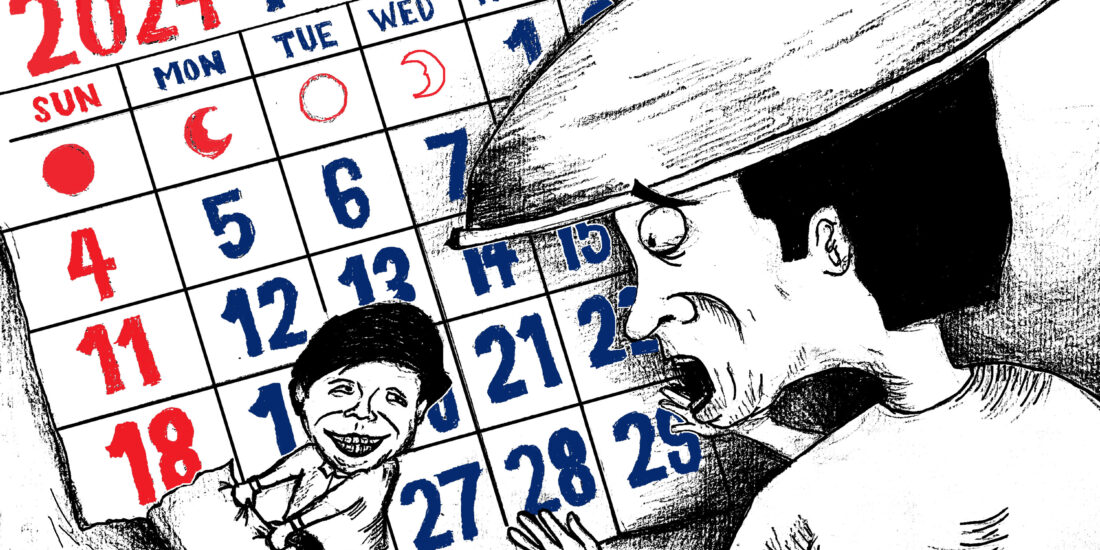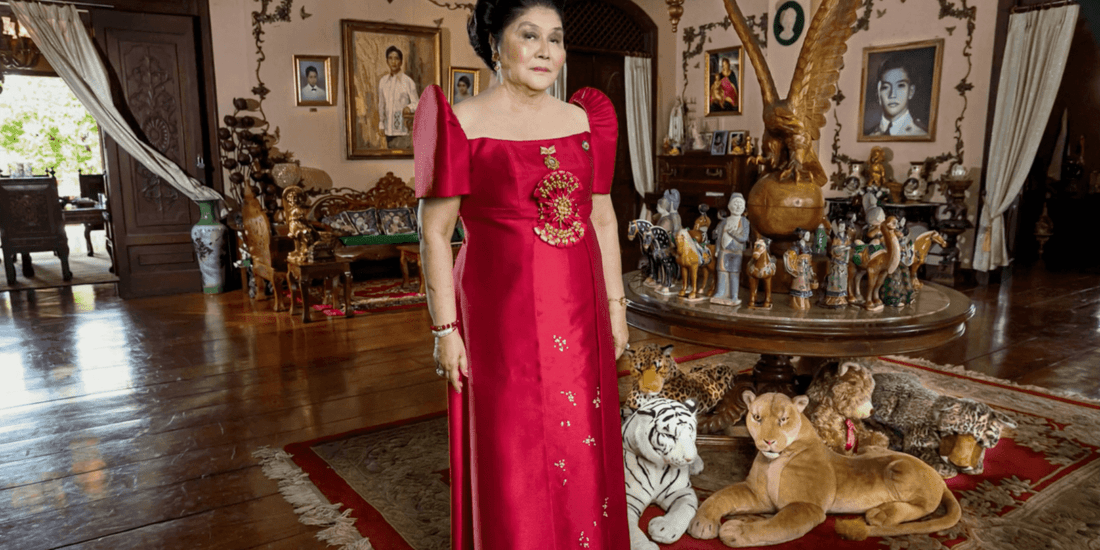Makita kang sakdal laya
It was pure silence that filled the consultation room in the office which held the three of us—two sophomore students and gentle-looking man in a simple white t-shirt and slacks. It was around 4 in the afternoon, just right after our classes and we were obviously tired. I have learned that you can always pretend and deny everything you are—except when you are sleepy.
But that was only before he answered our question, “So naaalala niyo pa po?” The hush dropped and there was not a single yawn.
“Estudyante rin ako tulad niyo,” he said. Jerermias Celestino is now 58 years old, waking up with the sun shining, a simple detail that he longed to see when he was 16. He spoke gently about 1972—the year Martial Law was declared. He told the story without a hint of rage, for his story rages itself.
He was in his last year of high school at that time. He said that he had a closely ordinary student life, yet outside the four walls of the classroom, he had become involved in a religious youth organization of the National Council of Churches Philippines. When asked why he joined these dangerous organizations at the time, he spoke with pride, “Bilang estudyante, paano kamai-involve diyan [sa movement]?”
He shared that after attending the organization’s meeting, he would bring home leaflets and give them away to his classmates, teachers, and even to passersbys in Silang, Cavite where he lived. Jerermias loved discussing with people; I could sense no regret as he retold his golden days of bravery and recklessness.
“Hindi ako napigilan.” People were anxiously telling him to stop the blatant defiance before he got caught red-handed. They were right. The municipality soon had him in their hands for interrogation. “Bakit ko daw iyon ginagawa?” he recounted how he was questioned and how he answered with a question too, “Paano naman iyong mga tinuro niyong aral ni Bonifacio; ni Rizal?” With today’s generation growing up to learn about these heroes, it had never occurred to me how we can follow their footsteps until that very moment.
He could still remember exactly how the interrogators threatened, “Makukulong ka ‘pag tinuloy mo ‘yan.” However, he wasn’t put behind the bars yet and his story continued. Reaching college at the age of 19, he finally had the chance to study well and start his life without the ghosts and prying eyes from his activist past. But as a Christian in a country turned into a pool of killings and corruption, he would constantly ask himself during those days, “Ano’ng magagawa mo diyan?” And I had to ask myself, what could I do now that my future self wouldn’t look back on without regret?
He continued, while I remained seated as my mind wandered to where his bravery would take him. His story unfolded at the time when he fully joined the underground movement. “Kasi huhulihin ka. ‘Pag hinuli ka, papatayin ka,” it sounded like he was sharing the rules of a dangerous game. “At tanggap naming mamatay [kami],” he said casually—as if death was not the worst thing that could happen.
He stopped his studies in his third year of college. Their group of activists enrolled in new universities—not to study, but to secretly extend their organization.
On June 18, 1979, units of the Armed Forces of the Philippines arrested Celestino and his comrades and took them to Camp Crame. He wasn’t surprised, as the group really had the plan to oust Marcos, but he could still hardly believe that they were falsely charged of possession of firearms; especially when they had no weapons with them. “Aanhin naman namin ang baril? Estudyante kami, ‘di ba?”
He recalled the pain of interrogation they suffered in that small, locked chamber in Quezon City, “Ang grabe do’n ‘yong mental torture e.” He couldn’t count how many times he was beaten, but he can remember every pain and name every bruise. His eyes squinted over how worse others suffered, “Nagkukuwento rin kasi kami ng mga kasama ‘ko. May sinunog ng sigarilyo ‘yong pag-aari, kinuryente.”
I could trace a hint of that fire in his eyes, even after decades had passed. He could still describe in detail how he couldn’t tell the day from night while being held captive. “Ang recollection ko, one week lang e. Kasi naka-blindfold kami. Pero sabi ng mga kaibigan ko two weeks daw ako sa Crame.”
His story then took him to Bicutan, when they were brought to Camp Bagong Diwa, in a small dungeon which held all ten of them after authorities failed to crack them in Crame. After a week, they were transferred to a building for “public order violators.” “Ang sabi kasi ni Marcos wala raw‘political detainee’ noon.” All of this was done without any proper hearing.
At the end of the 52 days of torture, the case against them was finally dropped. Their organization had religious back-up which was guided by international laws as well—they were still a student organization despite everything, after all. “Masyadong nagkaroon ng pressure kay Enrile…kay Marcos, so hindi rin kami nagtagal. Na-release din kami.” They were also too young in the first place, not old enough to carry guns—let alone be accused of using them.
He lighted up his testimony with a genuine smile—a smile that made me feel like he just reclaimed his freedom yesterday, after 52 days in the hands of the authority. He took his steps out of the jail, and out of his youth organization as well. He knew that once he had the slightest contact with the authority, he was never getting away from them—and he definitely didn’t want to leave any trace for them to capture him and his friends again. “Para kang apoy e, nakapag kinontakan ka ng mga kasama mo, masusunog sila.”
He let go of his involvement, but he knew someday the collective perseverance would succeed. “Kasi kapag tama ang ipinaglalaban mo, mag-go-grow [ka] e.” He had this sweet delight in his smile as he finally said the come-true of their ultimate dream and the fruit of all days trying to collect hope piece by piece—the EDSA revolution.
The EDSA revolution was the happy ending of his story. But before he drew the curtains down, blanketing memories out of recollection, he gave one last tribute to their most dreadful time in a dungeon at Crame—affirming to me that all the weight of the heavy world was worth it. They were all blindfolded inside the jail and Celestino remembered holding nothing but a guitar. Among everything he told about the years that he endured to fight for freedom, this was when I felt his pride the most. He was laughing heartily, “Kantahan kami.” I asked him why would he want to start a song in such a depressing moment, he replied “Kasi gusto kong makita iyong mga kasama ko kung wala na.” The songs that they caged with the detainees and how he almost died in a click of their captor’s gun while they all sang,“Maya-maya naramdaman ko, may baril na nakatutok sa akin.” He knew that no death threats had tumbled him down, because he was now in front of me, just smiling now.
He ended his story with a laugh—a laugh which sealed his pain. After hearing a story unknown to the rest of the world, I contemplated on how much of history hasn’t been told yet and kept within one’s own traumas and hidden crevices of the heart.
It appalled me to think that the very freedom I have today was once an impossible dream to fulfill. Looking at Celestino, I felt undeniably humbled and challenged; knowing that as a young man, he was once foolish enough to spark a change he could have watched others pursue—but he didn’t. He took his feet to action and heart in passion. He wanted to see his country in freedom. He did—and so will we.





